About a decade ago, a dear running friend had a double mastectomy and subsequent breast-reconstruction surgery. Once the immediate threat of cancer’s implications were safely in the rearview mirror, my friend, a 40-something nurse and mother of three teens, would cheerfully show off her new, perky boobs to any curious girlfriend.
(Interestingly, my friend’s choice was unusual back then. In 2009, only 24% of women undergoing mastectomies had reconstructive surgery. That figure rose to 40% in 2014, according to a statistical brief from Healthcare Cost and Utilization Project.)
Breast reconstruction generally relies on breast implants (saline or silicone) to help form new mounds or tissue from another part of the body to form boobs that appear as “normal” as possible in terms of shape, symmetry, and size.
Of course, cancer survivors aren’t the only women reshaping their racks. Breast augmentation was the most popular plastic surgery in 2017 in the U.S., according to the American Society of Plastic Surgeons; more than 300,000 women got boob jobs. Breast lift was number 7, and breast reduction was number 10, proving that more women than ever aren’t afraid to do what they want with shaping their bodies. Hooray for that!
Breast augmentation involves breast implants or fat transfer with the goal of increasing size. According to the ASPS, boob jobs can achieve a more rounded breast shape, improve natural breast size asymmetry, and restore breast volume lost after weight reduction, pregnancy, or many years of nursing. A-ha!
“I had four kids, and I nursed them all until they were practically 3,” says Susan Landolt, 37, a former ICU nurse and a BAMRbassador in Portland. Her kids are now 6, 9, 12, and 15. “My boobs were in sad shape.”

Happy Susan models a recent BAMR tee; get yours on our site! (The tee, not the figure, sorry.)
Susan started running with her big sister in 2011, and has since run half-marathons, marathons, and 50K trail races. She has found particular solace in Portland’s trails since the untimely death of her husband three years ago. Still, she didn’t like the way her boobs looked. “I work really hard to stay fit and healthy,” she says. “But I was self-conscious. And I thought, I’m too young and healthy to feel bad about myself.”
Susan actually had two augmentations. The first in 2014 took her from a “very small” 34B to 34D, but running reduced her body fat and their size, so she had them redone a year later to 36DD. She took more than a month off running each time.
“You need your surgeon to tell you when the tissue is healed enough to take on impact sports,” Marci Goolsby, M.D., primary care sports medicine physician at Hospital for Special Surgery, in New York City, reminds us. “If you had an implant placed, your surgeon will want the deeper tissues around the implant to heal before you start running. That will not be evident to the naked eye. The tissues deep inside need to scar to hold the implant in place.”
Susan reports that the first week after surgery was pretty rough, and she relied on pain meds. Susan’s augmentation went below the pectoral muscles, and once her surgeon cleared her to run, she found it was a little difficult at first to breathe. “I felt tight and it was hard to take a deep breath,” she says. “Each run got progressively easier, and after a month I didn’t notice.”
Mastectomies are more invasive procedures; women may have lymph-node tissues removed way up their arms and on their rib cages. Many women have reconstruction surgeries at a later date. Obviously, each surgery requires its own healing time.
Whether you’ve undergone reconstruction or augmentation, you’re going to need a new sports bra, says LaJean Lawson, who has a PhD in sports bra science (really!) and the founder and director of Champion’s Bra Lab. And your new girls have special considerations.

LaJean Lawson gives SBS a lift recording the AMR podcast in 2012
If you’re augmented, a compression-style sports bra may not work. “An implant isn’t going to respond to that compression,” LaJean says. “There’s bridging across the cleavage which leaves a gap.” Better to look for an encapsulation-style bra with separate cups for each boob.
Augmented women need to be more mindful of chafing, says LaJean, because they don’t have as much fat on their chests, just skin on top of implants. “Look for something that doesn’t have aggressive stitching,” she suggests. That said, silicone breasts are lighter than “natural” boobs, and will bounce less, so your bra won’t have to support as much weight in the cups and straps.
Women recovering from mastectomies and reconstructive surgeries are going to have limited range of motion in their arms and upper backs. A regular pull-over sports bra is going to be impossible to get on and off. So LaJean recommends a bra with a zipper in the front; an adjustable chest band; wider, adjustable straps; and a less stretchy cup, to hold everything in place. If you’ve had tissue removed from your arms, ribcage, and chest, look for a bra that is “body friendly in those areas.” (She advises steering clear of underwire bras.)
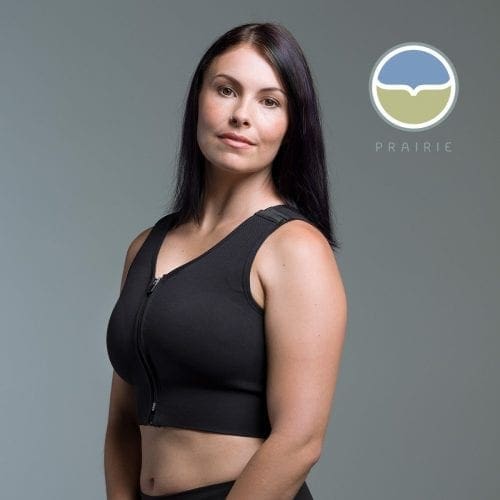
LaJean Lawson worked with surgeons to develop a special post-op sports bra, the Hugger. Find it at prairie.world.
Laundering and air-drying your sports bras after each use is particularly important post-op—after your doctor clears you to exercise, naturally.
Those choosing augmentation probably already know that some people will judge. As Susan herself puts it: “Why would you ever have your boobs done?”

Susan ran a trail 50K on Memorial Day
“I would say, if you want to do it, it’s your body, go for it,” says Susan. “It’s given me a lot more confidence, being a widow in my 30s. It makes me feel better about myself. Do what makes you happy.”
Have you had breast augmentation or reconstruction?
If so, what advice would you add?



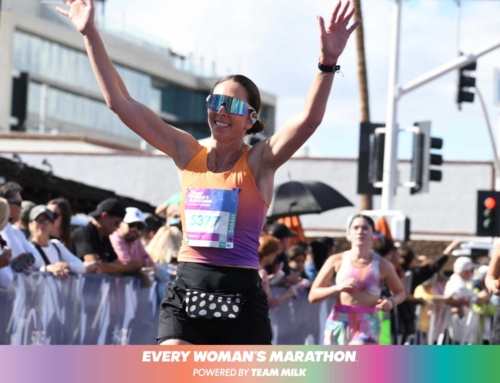
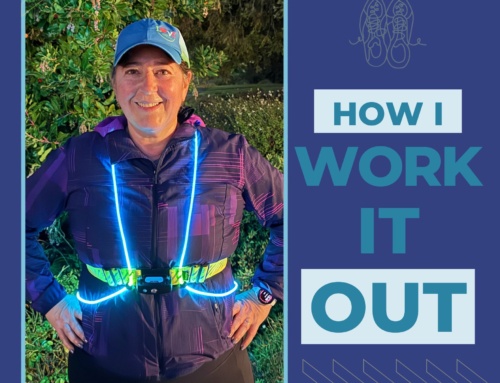
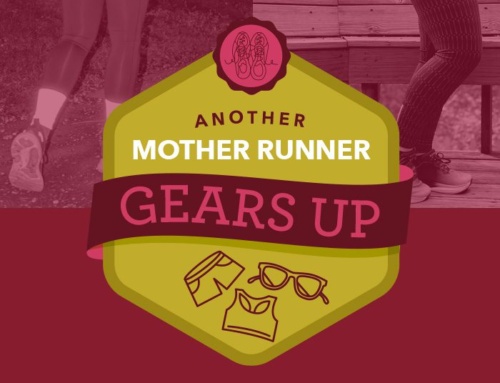
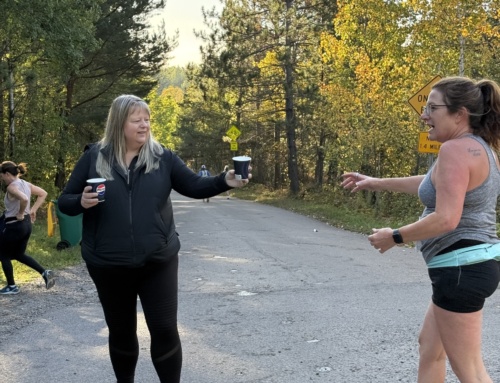
I had bilateral mastectomy with reconstruction just under 8 weeks ago, and though I was, and still am, small-chested, I really need a very supportive sports bra as I ease back into running. Many sports bras for smaller-chested women are not that supportive, so I have needed to do more research to find the right ones. I also need bras with a lower band so they do not irritate my incisions (which are just under my breasts). Going to a specialty store that has bras specifically for women post-mastectomy was very helpful for me. The bras are not cheap, but it was really worth the investment to get a couple of sports bras, and some non-sports bras, that really work for my new breasts and body. Another bit of advice for anyone struggling with post-surgical nerve pain in her breasts: exercise (even walking) really helps temporarily ease the pain.
This is very inspiring and helpful for me. Tnks for sharing